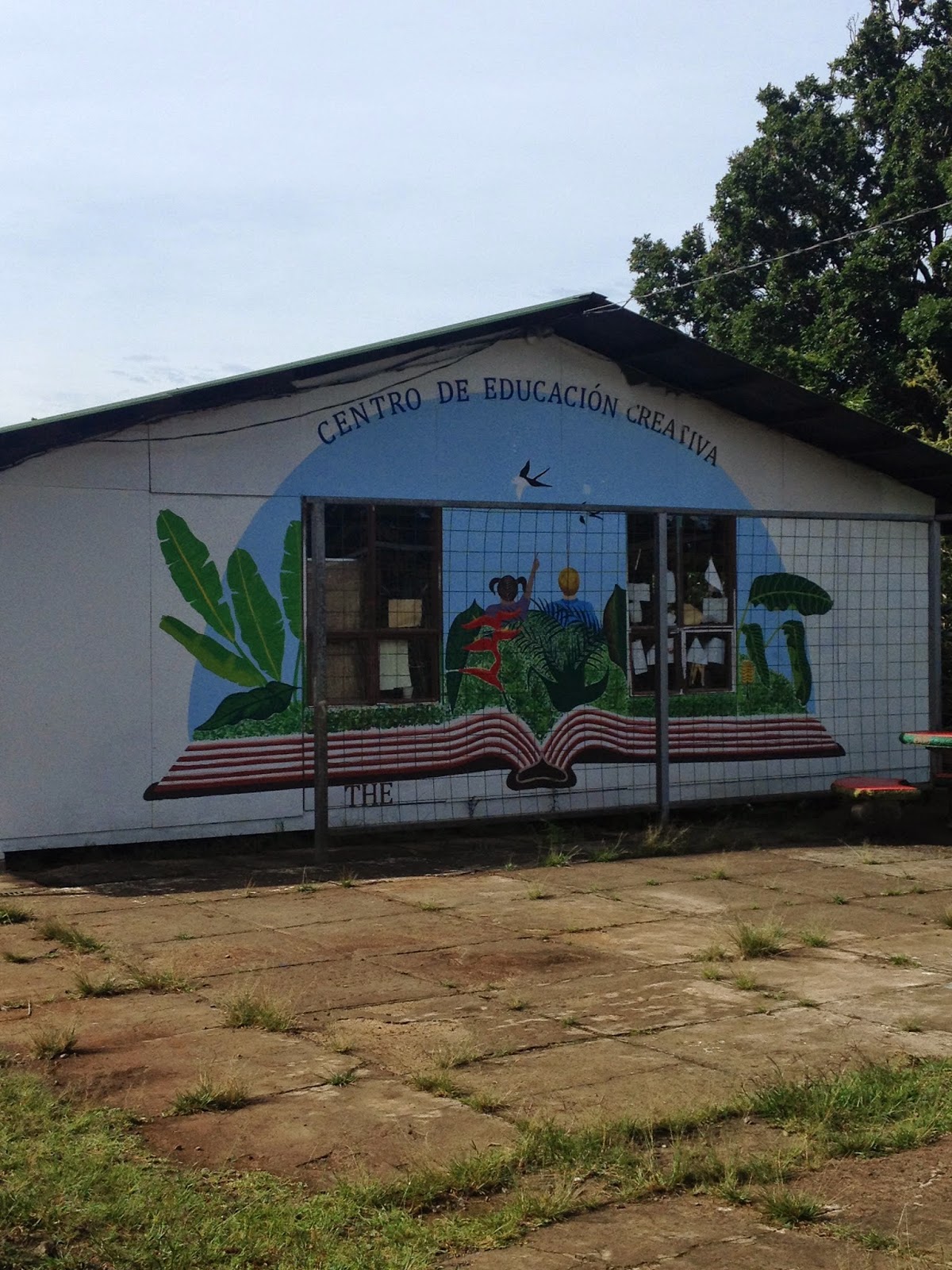Sitting
in the Chicago airport and I'm already trying to remember every aspect of my trip so
nothing is ever forgotten. After reviewing some of my goals I feel like this
trip was very successful. We were able to work with a variety of English
learners, including different settings (socioeconomic status, urban, rural),
type of school, and skill level. My Spanish vocabulary expanded, I had a
refresher on verb conjugation and I increased sentence structure skills. By
this I mean I learned as many “sight words” as possible so even if they are
simple sentences they make sense and have all the parts they need.
Over the
last three weeks I believe that the most significant experience for me was
visiting La Carpio and Life Monteverde the sustainable farm . Our experience at
La Carpio really stuck with me because we were able to do a community service
project, even if it was simple, and work with the students to see how their
school was ran. Helping the people that lived there as much as possible was
important to me because I think it is important for others to give back
especially when they are offered more opportunities or options in life. The
students there were so open and friendly even with huge language barriers we
were able to play and use the Spanish we had to communicate and practice colors
and numbers. I think what Gail and Fatina were doing there was absolutely
amazing.
The sustainable
farm was so important to me because I think it is critical to preserve the
Earth we have so future generations have a comfortable, healthy, safe place to
live. I also think it is so import for schools to do their part on recycling. The
cloud forest did an incredible job of this, going as far as using old juice
containers to grow trees and plants to reduce the amount of plastic used. I
fully plan of starting or enhancing the recycling program at my schools.
| Co-Teaching English body parts using a cooperative learning game |
Working with the students in the different schools was such a rewarding experience as well, getting real life hands on practice with ESL students was priceless. It was really helpful to show them that we were second language learners as well because it automatically built that connection, it made both parties feel more comfortable with trying to speak and take more risks during the lessons. I was also able to try different teaching methods to find what worked the best. The most successful ones were drawing things out, using gestures/acting or even pointing. Once I figured out what word or phrase they wanted or needed to say I would say it in English and have them repeat it word for word. These things will be good to use in my classroom as well as saying some words or phrases. I also learned that I will let minor mistakes go in the very beginning. For example, in Spanish if a word is said with an “a” ending verses an “o” its not going to ruin the sentence 99% of the time and if I nit-pick every single mistake the student is just going to get frustrated and I wouldn’t want them to feel defeated or shut down.
For those of you
considering studying away, I would absolutely recommend it. Spending the three
weeks in Costa Rica has broadened my views. I have seen, heard, and felt things
that I would never be able to in the United States, I just wish the photos I
took there could capture the whole moment instead of just little snap shots
here and there. I now know what it is like to live in a country where I do not
speak the native language, be immersed in trying to learn that new language as
well as improving my people, networking, and situational handling skills. My
time in Costa Rica was short but jam packed with activities. May 16th
we were 13 strangers, and now we have endless stories, jokes and we have made
some friendships that I can absolutely see lasting. As a group we have faced
fears, became a part of new families, opened up to each other, gotten to know
our selves, and been completely out of our comfort zones. This trip has been
worth every penny, stressful moment, and even hours waiting in the airport.









